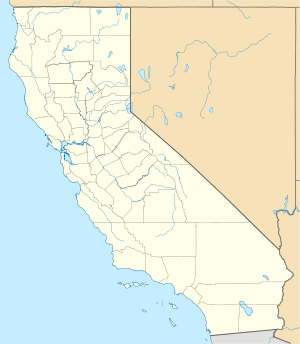Hercules (1907)

| |
| History | |
|---|---|
| Owner |
|
| Builder | John H. Dialogue and Sons, Camden, New Jersey |
| Launched | 1907 |
| In service | 1907 |
| Out of service | 1962 |
| Identification | Official number: 20481 |
| Status | Museum ship |
| General characteristics | |
| Type | Tugboat |
| Tonnage | 409 GT |
| Length | 151 ft (46 m) LOA |
| Beam | 26 ft (7.9 m) |
| Draft |
|
| Propulsion |
|
| Speed | 10 knots (19 km/h; 12 mph) |
| Crew | 15 |
Hercules (tug) | |
| Location | San Francisco, California |
| Coordinates | 37°48′36″N 122°25′20″W / 37.81000°N 122.42222°W |
| Built | 1906 |
| Architect | John H. Dialogue and Sons |
| NRHP reference No. | 75000225 |
| Significant dates | |
| Added to NRHP | January 17, 1975[1] |
| Designated NHL | January 17, 1986[2] |
Hercules is a 1907-built steam tugboat that is now preserved at the San Francisco Maritime National Historical Park in San Francisco, California.
History
[edit]Hercules was built in 1907 by John H. Dialogue and Sons, of Camden, New Jersey. She was built for the Shipowners' and Merchants' Tugboat Company of San Francisco, as part of their Red Stack Fleet (a part of today's Crowley Maritime Corporation). After completion, Hercules was sailed to San Francisco via the Straits of Magellan with her sister ship, Goliah, in tow.
For the first part of her life, Hercules was an oceangoing tug. Because of the prevailing northwest winds, sailing ships often employed Hercules and her sisters on journeys north up the coast from San Francisco. For example, in 1916, Hercules towed C.A. Thayer to Port Townsend, Washington. On return trips back down the coast, Hercules often towed log rafts of Pacific Northwest timber, to Southern California mills. At other times, Hercules was employed towing barges to other ports on the West Coast and to Hawaii, and in transporting equipment for the construction of the Panama Canal.
In 1924, Hercules was acquired by the Western Pacific Railroad. For her new owners, she worked shuttling railroad car floats across San Francisco Bay from Oakland and Alameda to San Francisco.
In 1947, she and the tugboat Monarch were given the task of towing the hulk of the battleship Oklahoma to San Francisco Bay to be scrapped. However, 500 miles from Hawaii, they were struck by a powerful storm and the Oklahoma began taking on water and sinking, threatening to drag the two tugs along with her. While the Monarch managed to release her lines, Hercules could not get free until the last moment, narrowly avoiding being dragged into the deep by the Oklahoma.[3] Afterwards, she returned to shuttling car floats and worked in this role until 1957, when she was replaced by the diesel-powered train ferry Las Plumas. Hercules was kept in a stand-by role to the new ferry until 1961.
The California State Park Foundation acquired Hercules in 1975, and the National Park Service took over her restoration in 1977. In 1986 she was designated a National Historic Landmark. She is now one of the exhibits of the San Francisco Maritime National Historical Park and is to be found moored at the park's Hyde Street Pier.
Image gallery
[edit]-
Triple expansion steam engine
-
Towing machine
-
In dry dock
-
Crew's mess
-
Wheelhouse
References
[edit]- ^ "National Register Information System". National Register of Historic Places. National Park Service. January 23, 2007.
- ^ "Hercules (Tug)". National Historic Landmarks Program. National Park Service. Archived from the original on November 14, 2007. Retrieved June 18, 2008.
- ^ Newell, Gordon (1957). Pacific Tugboats. Seattle, Washington: Superior Publishing. ISBN 978-1258209568.
Sources
[edit]- "Hercules". National Park Service. Archived from the original on June 21, 2005. Retrieved May 20, 2005.
- Brehm, Frank (1996–2005). "Western Pacific - Marine". Archived from the original on February 9, 2013. Retrieved May 20, 2005.
- Welts, Allen W. (October 1, 1974). "National Register of Historic Places Inventory—Nomination Form / Tugboat Hercules" (pdf). National Park Service. Retrieved October 11, 2012.
- "Accompanying Photos" (pdf). National Park Service. Retrieved October 11, 2012.
External links
[edit]- "Hercules". San Francisco Maritime National Historical Park. National Park Service.
- Historic American Engineering Record (HAER) No. CA-62, "Steam Tug HERCULES, Hyde Street Pier, San Francisco, San Francisco County, CA", 44 photos, 2 color transparencies, 7 measured drawings, 36 data pages, 3 photo caption pages
- 1907 ships
- Tugboats of the United States
- San Francisco Maritime National Historical Park
- Museum ships in San Francisco
- Western Pacific Railroad
- Steam tugs
- Historic American Engineering Record in San Francisco
- National Historic Landmarks in the San Francisco Bay Area
- Ships on the National Register of Historic Places in California
- National Register of Historic Places in San Francisco
- Fisherman's Wharf, San Francisco
- Rail transportation in Oakland, California
- Ships built by Dialogue & Company






